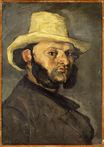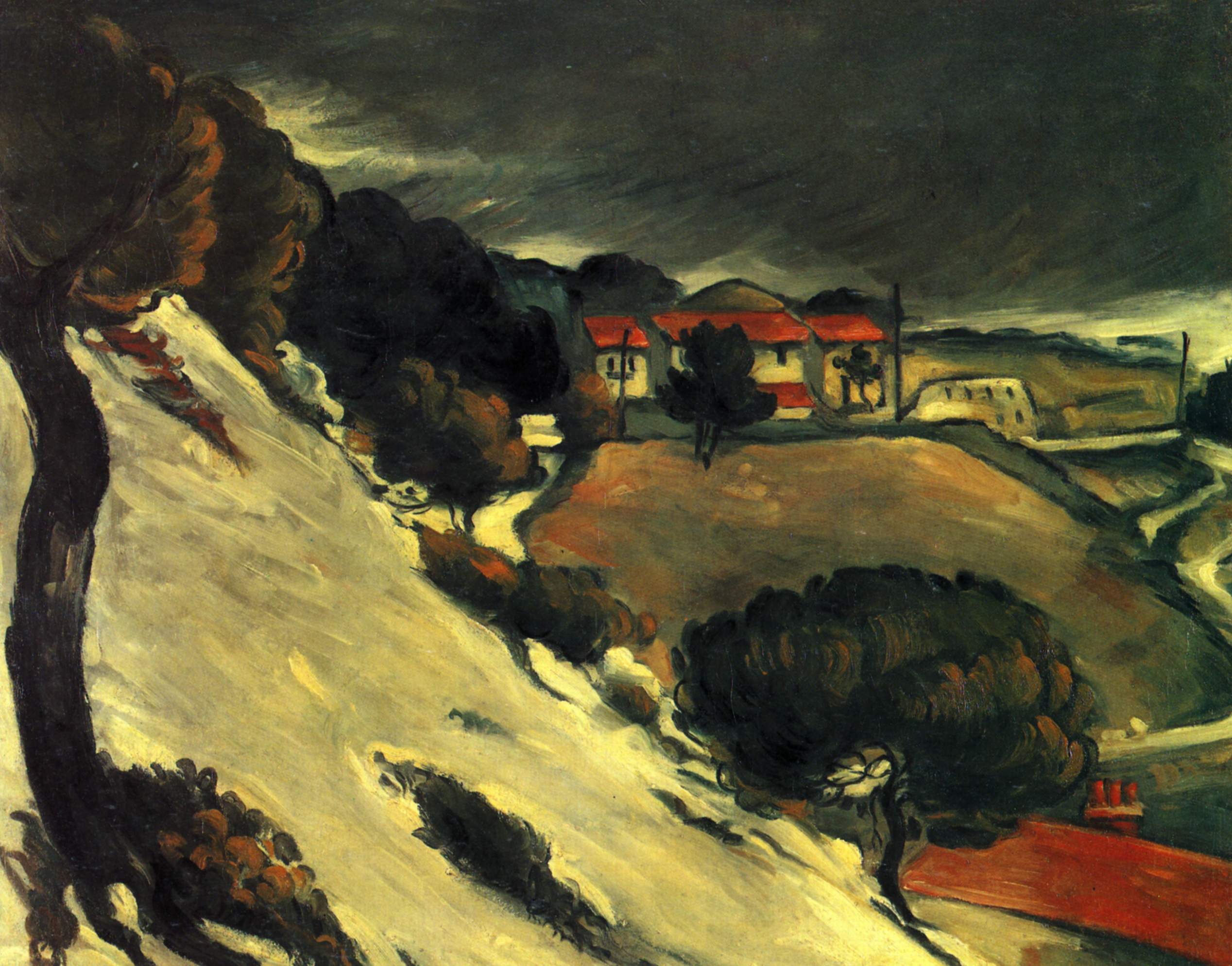Paul Cézanne - L'Estaque under snow 1870
 |
 |
 |
 |
 |
 |
 |

L'Estaque under snow. Melting Snow 1870
28x36cm oil/canvas
Private collection
<< Previous G a l l e r y Next >>
L'Estaque, Melting Snow was painted in a single session.It is one of only two snow-laden winter subjects Cézanne painted.
Cézanne moved to Provence in 1870 to evade military service during the Franco-Prussian War. He soon moved to L'Estaque, where he painted a number of landscapes. Critics differ in their interpretation of this painting, some see it as wholly personal, other as a response to the war with Prussia. Supporting the latter view, Anna-Teresa Tymieniecka saw the painting as making a statement on social and political transformation and wrote of the political context in which it was created, "what is our response to those red-roofed houses which are held, as if in a vice, between a leaden sky and a sliding block of snow?"
The colors are oppressively dark, while the thickly painted, quick brushwork adds to the urgent violence of the scene. With the exception of the red rooftops and the greens of the trees in the foreground, the colors and the tones are monotonous and gloomy. The whites, greys and blacks are used mostly for emotional impact. Though L'Estaque, Melting Snow evidences Cézanne's new-found facility in depicting the deep space of a landscape, it is marked by an emotional intensity closer in spirit to the turbulence of his early figure works than to the structural complexity of the later landscape paintings.